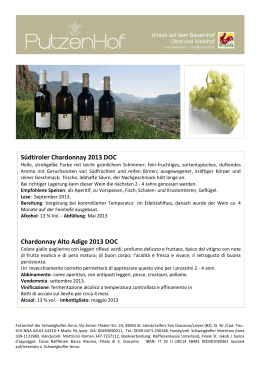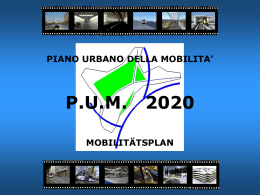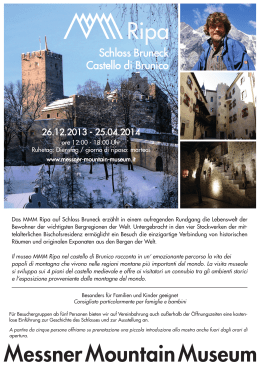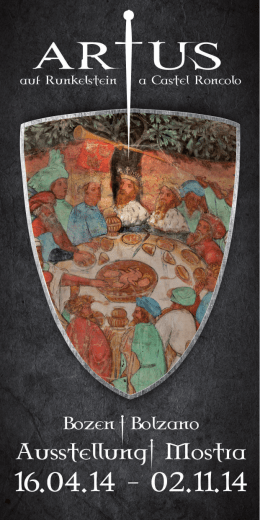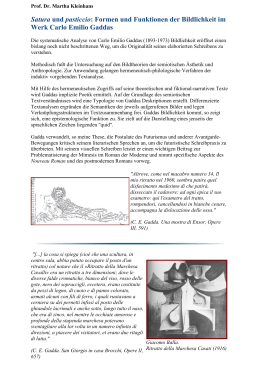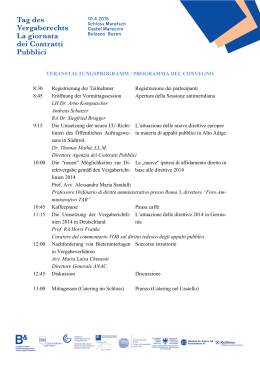CDS 283 (DDD) DIGITAL RECORDING JOACHIM RAFF (Lachen, nr. Zürich, 1822 - Frankfurt am Main, 1882) OVERTURE OP. 154 - SYMPHONY OP. 177 1 2 3 4 5 - Dame Kobold Overture Op. 154 07’32” Symphony No. 5 in E Major Op. 177 - Liebesglück (Allegro) - Andante quasi larghetto - Trennung (Tempo di Marcia) - Wiedervereinigung im Tode 12’25” 10’45” 11’32” 13’10” ➤ 55’25” ORCHESTRA DELLA SVIZZERA ITALIANA NICHOLAS CARTHY conductor RAFF: DAME KOBOLD, OUVERTURE OP. 154 SINFONIA NO. 5 “LENORE” Danilo Prefumo J oachim Raff fu uno dei sinfonisti dell’area tedesca più prolifici della sua epoca. Nacque in Svizzera, a Lachen, sul lago di Zurigo, nel 1822, da una famiglia di origine sveva. Costretto ad esercitare il mestiere di istitutore per poter sopravvivere, in campo musicale fu essenzialmente un autodidatta. Nel 1844, per farsi conoscere, inviò alcune sue composizioni a Felix Mendelssohn, che ne fu profondamente colpito e ne caldeggiò con successo la pubblicazione da parte di Breitkopf & Härtel. Ciò permise al giovane musicista di potersi dedicare interamente ai propri interessi. Per sei anni (dal 1850 al 1856) Raff svolse l’incarico di assistente di Franz Liszt a Weimar; pare anzi possibile che la strumentazione di alcuni dei più noti poemi sinfonici lisztiani, e in particolare di Ce qu’on entend sur la montagne, Tasso e Prometheus, sia in effetti in gran parte (se non totalmente) opera sua. Da Liszt, Raff derivò il suo interesse per un tipo di composizione sinfonica largamente ispirata a motivi letterari o descrittivi, e comunque di carattere extramusicale. Delle sue undici Sinfonie, scritte tra il 1861 e il 1876, ben nove portano sottotitoli che ne chiariscono il carattere e gli intenti. La gamma delle situazioni che offrono gli spunti per questi lavori è abbastanza ristretta e va dalla celebrazione patriottica della Sinfonia n.1 “An das Vaterland” (“Alla patria”), che rese il nome di Raff popolare in tutta la Germania, al naturalismo della Sinfonia n.3 op.153 “Im Walde” (“Nel bosco”), della n.7 op.201 “In den Alpen” (“Nelle Alpi”) e delle ultime quattro sinfonie, che riprendono lo schema sempre molto suggestivo del ciclo delle stagioni (n.8 “Frühlingsklänge”, n.9 “Im Sommer”, n.10 “Züri Herbst”, n.11 “Der Winter”); l’ispirazione letteraria è poi evidente nella Sinfonia n.5 in Mi maggiore op.177 “Lenore”, l’opera sinfonica forse di maggior qualità musicale scritta da Raff. Come operista, Raff ci ha lasciato poi sei lavori, dei quali solo due, però, furono rappresentati: König Alfred (Weimar, 1851) e Dame Kobold (Weimar, 1870). Morì a Francoforte sul Meno nel 1882. Raff scrisse l’opera comica Dame Kobold utilizzando un libretto di P. Reber ispirato alla Dama duende di Pedro Calderón de la Barca. L’opera ottenne modesto successo, e fu aspramente criticata da Liszt, che la definì impietosamente “un salmigondis habilement apprêté”. La breve Ouverture, che si apre sulle note evocative del corno accompagnato dal pizzicato degli archi, oppone ad una parte introduttiva più lirica e sentimentale una seconda parte di carattere più vivace ed animato. Nel linguaggio musicale di Raff si possono ravvisare tutti i tratti di un eclettismo un po’ generico, ancorché musicalmente spesso tutt’altro che disprezzabile, che tendono a confluire nella creazione di organismi musicali di struttura abbastanza complessa, come ad 4 esempio nella Prima Sinfonia “An das Vaterland” (Alla patria), formata da cinque movimenti e di lunghezza bruckneriana. Pur nell’assunto programmatico che le fa apparire simili, per molti versi, a poemi sinfonici in più parti, le Sinfonie di Raff appaiono debitrici, nel loro linguaggio, assai più nei confronti di Mendelssohn e Schumann che delle recenti acquisizioni armoniche di Liszt e Wagner. Dopo le novità formali e l’ampiezza inusitata della Prima Sinfonia, del resto, lo stesso Raff tornò nelle sue opere successive a strutture più tradizionali e ad una maggior concisione formale. La Sinfonia n.5 in Mi maggiore op.177 “Lenore” fu composta nel 1872 e trae ispirazione da una pagina poetica allora popolarissima in Germania, la ballata Lenore (1773) del poeta tedesco Gottfried August Bürger (1747 -1794). In questa ballata sono narrate le vicenda di una fanciulla il cui fidanzato è partito per la guerra; allorché l’esercito fa ritorno, Lenore lo cerca invano tra le fila dei reduci. In preda alla disperazione, invoca la morte e nega la misericordia del cielo. A notte, qualcuno batte alla porta di Lenore: è il fidanzato, che la invita a seguirla in groppa al suo cavallo nero. Inizia allora una cavalcata fantastica nella notte, con visioni da incubo, finché, davanti ad un cimitero, l’armatura del cavaliere cade in frantumi e di fronte alla fanciulla compare la morte che la porta via con sé. Raff tratta i quattro movimenti tradizionali della sinfonia come altrettanti quadri di un più ampio poema sinfonico, prestando la sua attenzione soprattutto agli elementi popolari della vicenda, senza volerne seguire passo per passo lo svolgimento e senza troppo insistere, soprattutto, sui suoi elementi più visionari e allucinati. Il primo movimento, Liebesglück (Gioia d’amore), Allegro, è una descrizione delle semplici gioie e degli entusiasmi della giovane innamorata, laddove il secondo tempo, Andante quasi Larghetto, una sorta di trasfigurata rêverie, è forse la pagina più riuscita dell’intera composizione. Il clima della ballata romantica ritorna invece prepotentemente in Trennung (Separazione), Marsch-Tempo, in cui le immagini della cavalcata notturna dei morti vengono evocate da un ossessivo tempo di marcia e da una scrittura orchestrale in cui grande importanza viene assegnata agli ottoni. Nel Finale, Wiedervereinigung im Tode (Ricongiungimento nella morte), Allegro, la morte della fanciulla viene ad assumere, nella bellissima coda conclusiva, il senso di una catartica purificazione, di una riunione di due anime infelici, che nella pessimistica conclusione della Ballata di Bürger era enunciata soltanto come speranza di Lenore morente. 5 RAFF: OVERTURE OP. 154 FROM DAME KOBOLD SYMPHONY NO. 5 “LENORE” Danilo Prefumo Translated by Daniela Pilarz J oachim Raff was one of the most prolific symphonic composers of the German-speaking world of his day. Born in Lachen, Switzerland, to a family of Swabian origin, he worked as a tutor to make ends meet and in music was practically selftaught. In 1844, to gain some renown, he sent some of his compositions to Felix Mendelssohn, who was very impressed; at his recommendation the works were published by Breitkopf & Härtel, which prompted the young musician to start dedicating himself entirely to music. For six years (from 1850 to 1856) Raff worked as an assistant to Liszt in Weimar; it seems possible, incidentally, that the instrumentation of some of Liszt’s most famous symphonic poems, such as Ce qu’on entend sur la montagne, Tasso and Prometheus, were in part (if not totally) his work. From Liszt, Raff derived his interest in a type of symphonic composition largely inspired by literary or descriptive sources. Of his eleven Symphonies, written between 1861 and 1876, as many as nine have enlightening subtitles. The range of inspiring situations is not very wide, spanning from the patriotic purpose of Symphony No.1 “An das Vaterland” (“To the Fatherland”), which made Raff’s name famous throughout Germany, to naturalistic subjects such as those of Symphony No.3 Op.153 “Im Walde” (“In the wood”), Symphony No.7 Op.201“In den Alpen” (“On the Alps”) and of his last four symphonies, which are dedicated to the evocative cycle of the four seasons (No.8 “Frühllingsklänge”, No.9 “Im Sommer”, No.10 “Zür Herbst” and No.11 “Der Winter”); quite obvious is the literary inspiration of the Symphony No.5 in E Major Op.177 “Lenore”, perhaps the finest symphonic work produced by Raff. As an operatic composer, Raff wrote six works, only two of which, however, were ever staged: König Alfred (Weimar, 1851) and Dame Kobold (Weimar, 1870). Raff died in Frankfurt in 1882. Dame Kobold was written to a libretto by P. Reber, inspired by Pedro Calderón de la Barca’s Dama duende. The opera had moderate success and was strongly criticised by Liszt, who called it “un salmigondis habilement apprêté” (a skilfully arranged hotch-potch). Its brief Overture, which opens on the evocative notes of the horn over the strings’ pizzicato, has a lyrical first part followed by a more lively one. Raff’s musical language is eclectic but pleasant, with traits that concur to the creation of rather complex music structures, such as that of Symphony No.1 “An das Vaterland”, consisting of five movements of Brucknerian length. Although they are similar, under many aspects, to multi-part symphonic poems, Raff’s Symphonies appears influenced more by Mendelssohn and Schumann than by the recent harmonic acquisitions of Liszt and Wagner. 6 After the formal novelties and unusual length of the First Symphony, as a matter of fact, Raff would go back to more traditional structures and formal conciseness. Symphony No.5 in E Major Op.177 “Lenore” was composed in 1872 and is inspired by a poem that was extremely popular in Germany, the ballad Lenore (1773) by German poet Gottfried August Bürger (1747-1794). It tells the story of a young woman whose fiancé left for the war; when the army comes back, Lenore looks in vain for him among the survivors. Desperate, she invokes death and denies the mercy of heaven. At night time there is a knock at Lenore’s door: it is her fiancé, who asks her to join her astride his black steed. They begin an imaginary ride in the night, with nightmarish visions, until, in front of a cemetery, the young man’s armour breaks into a thousand pieces and Death comes to take the girl away. Raff treats the symphony’s traditional four movements like as many episodes of a more ample symphonic poem, underlining especially the popular elements of the story without wanting to follow every step of its development and, above all, without insisting too much on its visionary elements. The first movement, Liebesglück (Love’s joy), Allegro, is a description of the simple joys and soaring feelings of the young woman in love; the second one, Andante quasi Larghetto, a sort of transfigured rêverie, is perhaps the finest passage of this work. The atmosphere of the Romantic ballad pervades the following Trennung (Separation), Marsch-Tempo, where images of the dead riding in the night are evoked through an obsessive march rhythm and by orchestral writing where the brass instruments are in the foreground. In the Finale, Wiedervereinigung im Tode (Reunion in death), Allegro, the young woman’s death appears, in the beautiful coda, as a catharsis, as the reunification between two unhappy souls, which, in the pessimistic conclusion of Bürger’s Ballad, was announced only as the wish of dying Leonore. 7 Orchestra della Svizzera italiana RAFF: DAME KOBOLD, OUVERTURE OP. 154 SYMPHONIE NR. 5 “LENORE” Danilo Prefumo Übersetzung: Eva Pleus J oachim Raff war im deutschsprachigen Gebiet einer der fruchtbarsten Symphoniker seiner Zeit. Er wurde 1822 in Lachen am Zürcher See in einer aus Schwaben stammenden Familie geboren. Um seinen Lebensunterhalt zu bestreiten, war er gezwungen, sich als Hauslehrer zu verdingen und war auf musikalischem Gebiet im wesentlichen Autodidakt. 1844 sandte er einige seiner Kompositionen zum Kennenlernen an Felix Mendelssohn-Bartholdy, der sich sehr beeindruckt zeigte und erfolgreich eine Veröffentlichung bei Breitkopf&Härtel befürwortete. Dies ermöglichte dem jungen Komponisten, sich völlig seinen Interessen zu widmen. Sechs Jahre lang (von 1850 bis 1856) hatte Raff in Weimar die Aufgabe eines Assistenten von Franz Liszt. Es scheint sogar wahrscheinlich, daß die Instrumentierung einiger der bekanntesten Tondichtungen Liszts, und speziell von Ce qu’on entend sur la montagne, Tasso und Prometheus, effektiv zum Großteil (wenn nicht zur Gänze) sein Werk ist. Von Liszt leitete Raff sein Interesse für eine Art der symphonischen Komposition ab, die stark an literarischen oder beschreibenden und jedenfalls außermusikalischen Motiven inspiriert war. Von seinen zwischen 1861 und 1876 geschriebenen elf Symphonien tragen neun Untertitel, die ihre Natur und Absichten klären. Die Skala der Situationen, die Anregung für diese Werke sind, ist ziemlich beschränkt und geht von der patriotischen Verherrlichung der Symphonie Nr. 1 “An das Vaterland”, die den Namen Raffs in ganz Deutschland populär machte, zum Naturalismus der Symphonie Nr. 3 op. 153 “Im Walde”, der Nr. 7 op. 201 “In den Alpen” und der letzten vier Symphonien, die das immer sehr suggestive Schema des Jahreszeitenzyklusses aufnehmen (Nr. 8 “Frühlingsklänge”, Nr. 9 “Im Sommer”, Nr. 10 “ZüriHerbst”, Nr. 11 “Der Winter”). Die literarische Inspiration ist außerdem in der Symphonie Nr. 5 in E-Dur op. 177 “Lenore” deutlich, vielleicht Raffs musikalisch hochstehendstes Werk. Als Opernkomponist hinterließ uns Raff außerdem sechs Werke, von denen aber nur zwei zur Aufführung kamen: König Alfred (Weimar, 1851) und Dame Kobold (Weimar, 1870). Der Komponist starb 1882 in Frankfurt am Main. Raff schrieb die komische Oper Dame Kobold auf ein Libretto von P. Reber, das auf der Dama duende von Pedro Calderón de la Barca basierte. Die Oper hatte mäßigen Erfolg und wurde von Liszt, der sie mitleidslos als “un salmigondis habilement apprêté” bezeichnete, hart kritisiert. Die kurze Ouverture, die mit den evozierenden Noten des Horns, begleitet vom Pizzikato der Streicher, beginnt, setzt einer lyrischen, sentimentalen Einleitung einen zweiten Teil von lebhafterem, bewegterem Charakter gegenüber. 10 In der musikalischen Ausdrucksweise Raffs können alle Züge eines, wenn auch musikalisch oft alles andere als zu verachtenden, etwas allgemeinen Eklektizismus erkannt werden., die zur Schaffung musikalischer Organismen von recht komplexer Natur neigen, wie beispielsweise in der Ersten Symphonie “An das Vaterland”, die aus fünf Sätzen besteht und Brucknerlänge erreicht. Trotz der programmatischen Voraussetzung, die sie in vieler Hinsicht mehrteiligen symphonischen Dichtungen ähneln läßt, erscheinen Raffs Symphonien in ihrer Ausdrucksweise einem Vergleich mit MendelssohnBartholdy und Schumann sehr viel näher als den jüngeren harmonischen Errungenschaften Liszts und Wagners. Nach den formalen Neuheiten und der ungewöhnlichen Weitläufigkeit der Ersten Symphonie kehrte Raff im übrigen in seinen darauffolgenden Werken zu traditionelleren Strukturen und größerer formaler Knappheit zurück. Die Symphonie Nr. 5 in D-Dur op. 177 “Lenore” wurde 1872 geschrieben und ist an einer damals in Deutschland äußerst populären Dichtung inspiriert, der Ballade Lenore (1773) von Gottfried August Bürger (1747-1794). Darin wird von einem Mädchen erzählt, dessen Verlobter in den Krieg zog. Als das Heer zurückkehrt, sucht ihn Lenore in den Reihen der Heimkehrer vergeblich. Völlig verzweifelt wünscht sie den Tod herbei und leugnet die Barmherzigkeit des Himmels. In der Nacht klopft es an Lenores Tür. Es ist ihr Verlobert, der sie auffordert, ihm auf dem Rücken eines schwarzen Pferdes zu folgen. Damit beginnt ein phantastischer Ritt durch die Nacht voller alptraumhafet Erscheinungen, bis die Rüstung des Ritters vor einem Friedhof in Trümmer fällt und dem Mädchen der Tod erscheint, der es mit sich führt. Raff behandelt die vier traditionellen Sätze der Symphonie wie ebenso viele Bilder einer weitläufigeren symphonischen Dichtung und widmet seine Aufmerksamkeit vor allem den volkstümlichen Elementen der Geschichte, ohne deren Ablauf Schritt für Schritt folgen zu wollen und vor allem, ohne allzuviel auf den visionärsten und halluziniertesten Elementen zu verweilen. Der erste Satz, Liebesglück, Allegro, ist die Beschreibung der einfachen Freuden und enthusiastischen Regungen der jungen Verliebten, während der zweite Satz, Andante quasi Larghetto, eine Art verklärter Reverie, vermutlich das gelungenste Stück der gesamten Komposition ist. Das Klima der romantischen Ballade kehrt hingegen machtvoll in Trennung, Marsch-Tempo, zurück, wo die Bilder des nächtlichen Ritts der Toten von einem obsessiven Marsch und einer orchestralen Schreibweise, die den Blechbläsern große Bedeutung zuweist, evoziert werden. Im Finale, Wiedervereinigung im Tode, Allegro, nimmt der Tod des Mädchens in der wunderschönen abschließenden Koda den Sinn einer kathartischen Reinigung an, der Vereinigung zweier unglücklicher Seelen, die im pessimistischen Schluß von Bürgers Ballade bloß als Hoffnung der sterbenden Lenore zum Ausdruck gekommen war. 11 RAFF: DAME KOBOLD, OUVERTURE OP. 154 SYMPHONIE N° 5 “LENORE” Danilo Prefumo Traduit par Cécile Viars J oachim Raff fut l’un des symphonistes allemands les plus féconds de son époque. Il était né en 1822 en Suisse, sur le lac de Zurich, d’une famille d’origine souabe. Contraint d’exercer le métier d’instituteur pour survivre, il fut essentiellement autodidacte dans le domaine musical. En 1844, pour se faire connaître, il envoya plusieurs de ses compositions à Felix Mendelssohn, qui fut profondément frappé et en appuya chaleureusement la publication par Breitkopf & Härtel. Cela permit au jeune musicien de se consacrer entièrement à sa passion. Durant six années (de 1850 à 1856) Raff fut l’assistant de Franz Liszt à Weimar; il semble même possible que l’instrumentation de certains des plus célèbres poèmes symphoniques de Liszt, notamment Ce qu’on entend sur la montagne, Tasso e Prometheus, ait été en grande partie (sinon entièrement) son œuvre. Grâce à Liszt, Raff se consacra plus particulièrement à un genre de composition symphonique largement inspirée de motifs littéraires ou descriptifs, de caractère extra-musical. De ses onze Symphonies, écrites entre 1861 et 1876, neuf portent des sous-titres qui en indiquent le caractère et les intentions. La gamme des situations sur lesquelles reposent ces compositions est relativement réduite: de la célébration patriotique de la Symphonie n°1 “An das Vaterland” (“A la Patrie”), qui apporta à Raff la célébrité dans toute l’Allemagne, au natura- lisme de la Symphonie n° 3 op.153 “Im Walde” (“Dans la forêt”), de la n° 7 op.201 “In den Alpen” (“Dans les Alpes”) et des quatre dernières symphonies, qui reprennent le schéma toujours évocateur du cycle des saisons (n° 8 “Frühlingsklänge”, n° 9 “Im Sommer”, n° 10 “Zür Herbst”, n° 11 “Der Winter”); l’inspiration littéraire éclate dans la Symphonie n° 5 en “mi” majeur op.177 “Lenore”, la composition symphonique écrite par Raff qui présente sans doute la plus grande qualité musicale. Comme compositeur d’opéra, Raff nous a laissé six œuvres dont deux seulement furent représentés: König Alfred (Weimar, 1851) et Dame Kobold (Weimar, 1870). Il mourut en 1882 à Francfort sur le Main. Raff écrivit l’opéra comique Dame Kobold d’après un livret de P. Reber inspiré de Dama duende de Pedro Calderón de la Barca. L’opéra obtint un succès modeste et fut âprement critiqué par Liszt, qui le définit impitoyablement “un salmigondis habilement apprêté”. La brève Ouverture, qui s’ouvre sur les notes évocatrices du cor accompagné du pizzicato des cordes, oppose une partie introductive plutôt lyrique et sentimentale à une seconde partie de caractère plus vif et animé. L’on discerne dans le langage musical de Raff tous les éléments d’un éclectisme généralisé, quoique appréciables au plan musical, qui tendent à converger dans la création d’organismes musicaux présen- 12 tant une structure relativement complexe, comme par exemple dans la Première Symphonie “An das Vaterland” (A la Patrie), formée de cinq mouvements d’une longueur digne de Bruckner. Bien que semblables, sous bien des aspects, à des poèmes symphoniques en plusieurs parties, les Symphonies de Raff semblent devoir, dans leur langage, bien plus à Mendelssohn et Schumann qu’aux récentes acquisitions harmoniques de Liszt et Wagner. Après les innovations formelles et la longueur inhabituelle de la Première Symphonie, du reste, Raff revint ensuite à des structures plus traditionnelles et à une plus grande concision formelle. Composée en 1872, la Symphonie n° 5 en “mi” majeur op.177 “Lenore” est inspirée d’un poème à l’époque très populaire en Allemagne, la ballade Lenore (1773) du poète allemand Gottfried August Bürger (1747 -1794), qui conte l’histoire d’une jeune fille dont le fiancé est parti pour la guerre. Lorsque l’armée revient, elle le cherche en vain dans les rangs des rescapés. En proie au désespoir, elle invoque la mort et nie la miséricorde du ciel. La nuit venue, quelqu’un frappe à la porte de Lenore: c’est son fiancé qui l’invite à le suivre sur son cheval noir. Commence alors une fantastique chevauchée nocturne, accompagnée de visions effrayantes, jusqu’au moment où, arrivés devant un cimetière, l’armure du cavalier se brise; la mort apparaît alors devant la jeune fille et l’emporte. Raff traite les quatre mouvements traditionnels de la symphonie comme autant de tableaux d’un plus vaste poème symphonique, en prêtant attention notamment aux éléments populaires de l’histoire, mais sans vouloir en suivre le déroulement pas à pas et sans trop insister sur les éléments visionnaires et hallu- cinés. Le premier mouvement, Liebesglück (Joie d’amour), Allegro, est une description des simples joies et des enthousiasmes de la jeune fille, tandis que le second mouvement, Andante quasi Larghetto, sorte de rêverie transfigurée, est sans doute la page la plus réussie de la composition. Le climat de la ballade romantique s’impose de nouveau dans Trennung (Séparation), Marsch-Tempo, où les images de la chevauchée nocturne des morts sont évoquées par un temps de marche obsédant et une écriture orchestrale qui accorde une place prépondérante aux cuivres. Dans le Finale, Wiedervereinigung im Tode (Réunion dans la mort), Allegro, la mort de la jeune fille revêt, dans la très belle coda finale, le sens d’une purification, d’une réunion de deux âmes malheureuses qui, dans la conclusion pessimiste de la Ballade de Bürger, était annoncée comme espoir de Lenore mourante. 13 CDS 133 CDS 259 DOMENICO DRAGONETTI Double bass concerto and other works Ubaldo Fioravanti Orchestra di Padova e del Veneto NICOLÒ PAGANINI Sonata per la Gran Viola Luigi Alberto Bianchi plays the Amati viola 1595 CDS 203 CDS 258 PAGANINI - TCHAIKOVSKY Violin Concertos Ruggiero Ricci ALFREDO CASELLA Concertos Op. 56, 58, 69 Orchestra I Pomeriggi Musicali Marcello Panni, conductor FIRST RECORDING 14
Scarica

